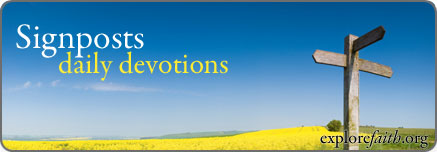Sunday, December 19
The wolf shall live with the lamb, the leopard shall lie down with the kid, the calf and the lion and the fatling together, and a little child shall lead them.
—Isaiah 11:6
An early 19th century Quaker minister in Bucks County, Pennsylvania, Edward Hicks made his living primarily by painting coaches and creating decorative signs for merchants. What he is best known for, however, is his work The Peaceable Kingdom—all 100-plus versions of it, produced from the 1820s to 1849.
Hicks’ obsession—if you want to call it that—isn’t hard to understand. Indeed, few passages in scripture are as intriguing or appealing as the prophet Isaiah’s metaphorical depiction of the coming kingdom: “The cow and the bear shall graze, their young shall lie down together; and the lion shall eat straw like the ox.” In short, the world will be turned on its head.
The idea that natural enemies—in this case, fierce carnivores and vulnerable domestic animals—could actually coexist is a far-fetched dream for most of us. But Isaiah doesn’t stop there. In his vision of a world in which God’s truth and mercy permeate all of life, the very natures of these creatures will be changed.
The lion will no longer kill for meat but will be satisfied with straw. Archetypal enemies, the wolf and lamb will cease to be motivated by hunger and fear. And the innocent child, naïve about the realities of this world, will be seen as preternaturally wise.
As many historians and critics have noted, the figures in some of Hicks’ later renditions of The Peaceable Kingdom seem more tense, more watchful, more ready to attack. This shift may well have been due to his concerns about the growing doctrinal rift among his fellow Quakers at that time. Ultimately, however, the rancor and apprehension disappear.
“The animals become visibly older: white whiskers and sad, sunken eyes,” John Braostoski writes in Friends Journal. “The docility is from fatigue rather than from a peaceful blessing. But this is a fatigue of pride, ego, lust, and greed—perhaps not so bad. All those symbols recede.”
The sweet innocence of paradise may be gone in these final paintings, but what remains is a wisdom born of experience, an awareness that peace is not an unrealistic hope, but a spiritual necessity.
O God, maker of all that is, help us to realize that none of us is outside your kingdom, and grant us the grace and wisdom to live together in peace.
These Signposts originally appeared on explorefaith in 2004.



